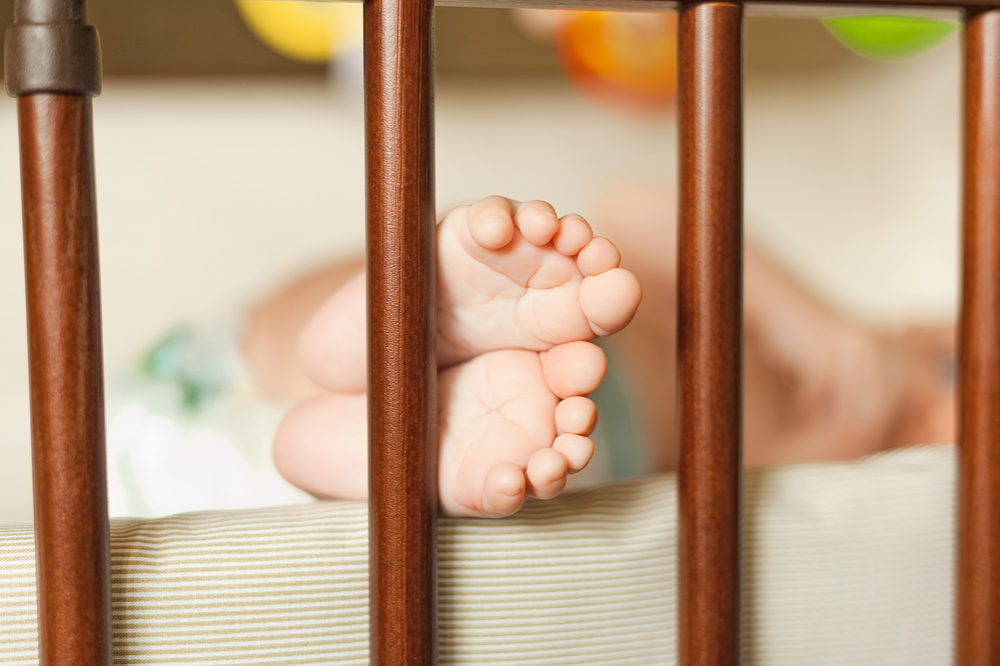Crib Marketing Often Portray Unsafe Sleeping Conditions: Study

Many advertisements and store displays for baby cribs show infants in hazardous sleep conditions, which are not recommended by safety experts, according to the findings of a new study.
In a report published in the December 2016 issue of the medical journal Pediatrics, researchers conclude that only about half of all crib displays in retail stores depict infants sleeping in safe conditions within a crib. About 35% of retail advertisements showed children placed in unsafe crib conditions.
Researchers surveyed retail crib displays from national retailers, and examined infant sleep advertisements from parenting magazines from 1992, 2010 and 2015. More than 1,700 retail crib displays were reviewed.

Did You Know?
Millions of Philips CPAP Machines Recalled
Philips DreamStation, CPAP and BiPAP machines sold in recent years may pose a risk of cancer, lung damage and other injuries.
Learn MoreThe study indicated only half of the retail displays reviewed followed recommended American Academy of Pediatrics guidelines for safe sleep conditions for infants.
Many of the displays that depicted unsafe environments included items in the cribs, such as bumper pads and loose bedding, which are not recommended because of the suffocation hazard they pose to young children.
Among the national magazine ads examined, about 40% depicted infant cribs and sleep products that were unsafe for infants, such as infants sleeping on their stomachs. The magazine ads that portrayed safe sleep environments revealed racial and ethnic disparities.
Ads that showed infants in safe environments included white children. Conversely, ads that depicted infants in unsafe positions or with unsafe items in the cribs often featured minority children in the ads.
The most common safety issue shown in ads were crib bumpers, which were included in about 70% of unsafe crib ads. Stuffed animals were found in about 13% of ads and soft bedding in 56% of ads.
A study published in August indicated 9 out of 10 infants are at risk of SIDS from dangerous items allowed in infant cribs. More than 90% of infants had loose bedding in their cribs, 21% were put to sleep on soft surfaces, and 14% put to sleep on their stomachs.
Researchers note that while many magazine ads have become more adherent to safe sleep standards over time, many still remain behind on depicting safe standards. Additionally, crib manufactures and retail stores still market and sell bedding and other sleep products that are considered unsafe.
Many parents will purchase and use unsafe crib bedding and other products simply because it is advertised by the store or manufacturer, and will mistakenly think it is safe for this reason.
The FDA and CPSC issued warnings in 2010 after infant sleep positioners became a popular item for infants. More than a dozen infants died from having these items in their cribs, suffocating on the products. Parents believed them to help infants sleep better, despite safety expert recommendations against having items within an infant’s crib.
Sudden infant death syndrome (SIDS) and sleep-related sudden unexpected infant death are the leading causes of infant mortality in the U.S.
SIDS often occur during sleep or in the sleep environment, like cribs. It often is a result of accidental suffocation and strangulation as well as deaths with no conclusive cause of death.
In 1990, 130 in every 10,000 babies died from SIDS. As a result, a safety campaign was launched calling on parents to put their babies to sleep on their backs without soft bedding, bumpers, toys, blankets or other stuffed animals that could suffocate the child.
The SIDS rate has since dropped to about four deaths out of every 10,000 infants. However, researchers say parents still need further education by pediatric and public health care providers.
Safety experts recommend infants are placed on their backs to sleep and all loose or soft items, including crib bumpers, blankets, stuffed animals and positioners, be removed from the crib to prevent accidental deaths.
Get more articles like this sent directly to your inbox.
"*" indicates required fields




0 Comments